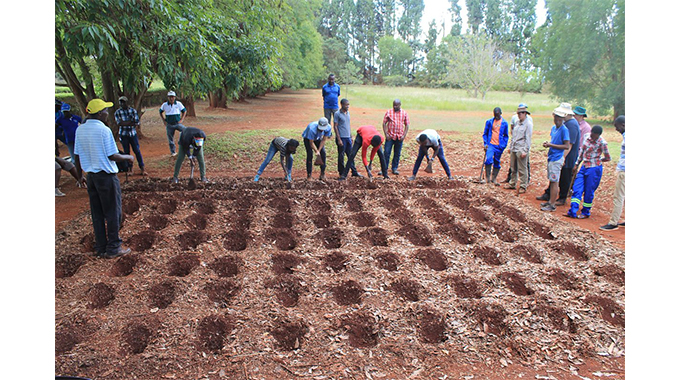
The Sunday News

Richard Muponde, Harare Bureau
MORE than three million households are being targeted for support under the highly successful Pfumvudza/Intwasa scheme after Government released $20 billion as part of early preparations for the 2022/2023 summer cropping season.
Government had initially planned to grow the agriculture sector to US$8,2 billion by 2025 through the Agriculture and Food Systems Transformation Strategy (AFSTS) launched by President Mnangagwa in 2020, but the target had already been achieved by last year. It has since been revised to US$10 billion for the same period. This year, Zimbabwe planted its best-ever wheat hectarage of over 77 000 hectares (ha).
Chief director responsible for Agriculture Advisory Services in the Ministry of Lands, Agriculture, Fisheries, Water and Rural Development Professor Obert Jiri told our Harare Bureau that Government will also cover an additional 520 000 families for cotton production also under conservation agriculture.

Professor Obert Jiri
“The Presidential Input Programme (Pfumvudza /Intwasa) will target three million farmers, up from last season’s 2,7 million in communal, A1, small-scale commercial farming, old resettlement and peri-urban farming sectors for cereals, oilseeds and legumes,” Prof Jiri said.
Government has already indicated that it would want to ensure household and national food security at all costs, especially at a time when global food supply chains have been disrupted over the past two years by Covid-19 and lately the war in Ukraine.
This year’s Pfumvudza/Intwasa scheme will have specific input packages for each ecological farming region. In 2020/2021 cropping season, the programme contributed 43 percent of total maize production, while in the 2021/22 season, which was affected by a mid-season dry spell, the programme contributed 35 percent of total maize output.
According to Prof Jiri, the programme will this season support five plots (measuring 39 metres x 16 metres, which is equal to 0,0624 ha) per household. There will be input packages for maize, sorghum, pearl millet, soyabeans, sunflower, groundnuts, vegetables and African peas. The packages will include water retention enhancers, herbicides for three plots and fall armyworm control.

Pfumvudza/Intwasa training
“Farmers in Region 1 and 2 will get three mandatory maize plots, two optional plots comprising sunflower, sorghum, pearl millet, groundnuts, African peas and sugar beans. Farmers in Region 3 will get two mandatory maize plots and sorghum or sunflower plot, three optional plots comprising sunflower, sorghum, pearl millet, groundnuts, African peas and sugar beans. “Farmers in Region 4 and 5 will get one mandatory sorghum plot, one millet plot and one sunflower plot. There will also be two optional plots comprising maize, African peas, groundnuts, sorghum and millet.”
Success of the conservation agriculture programme, he said, would be anchored on sticking to set timelines, particularly early digging of planting holes.
“The use of mulching to conserve moisture and superb and judicious weed control is important. The programme was also assisted by timely availability and distribution of inputs, particularly seed and fertiliser.”
Addressing board of directors and senior managers of parastatals under his ministry on Friday, Lands, Agriculture, Fisheries, Water and Rural Development Minister Dr Anxious Masuka said the US$10 billion target is achievable.

Dr Anxious Masuka
“In our AFSTS, we must ensure that it (the target) has been reviewed. Later this year, in the mid-term review, we intend to lay a foundation to ensure that this sector is at least a US$10 billion sector by 2025. In fact, I am optimistic about the US$10-billion sector.”
He said cropping had reached milestones that seemed impossible in the past.
“We have achieved a record. Of the wheat hectarage that has been planted to date, 77 606 hectares had been planted by midnight (Friday), which is a record. The last time we were in record territory was in 2004 when we achieved 70 585 hectares. I hope that this record planting will translate into a record volume of crops. We have collectively worked with the private sector and everyone else to ensure that this happens. That must form the basis and foundation of what we can do together.”
He also said in line with ministerial performance contracts signed in February this year, Government has directed all parastatals to sign performance contracts aligned to the US$10 billion target. Overall, AFSTS targets to increase incomes for farmers by 100 percent, create one million jobs, increase import substitution to 80 percent, including a 40 percent increase in both value addition and exports.



